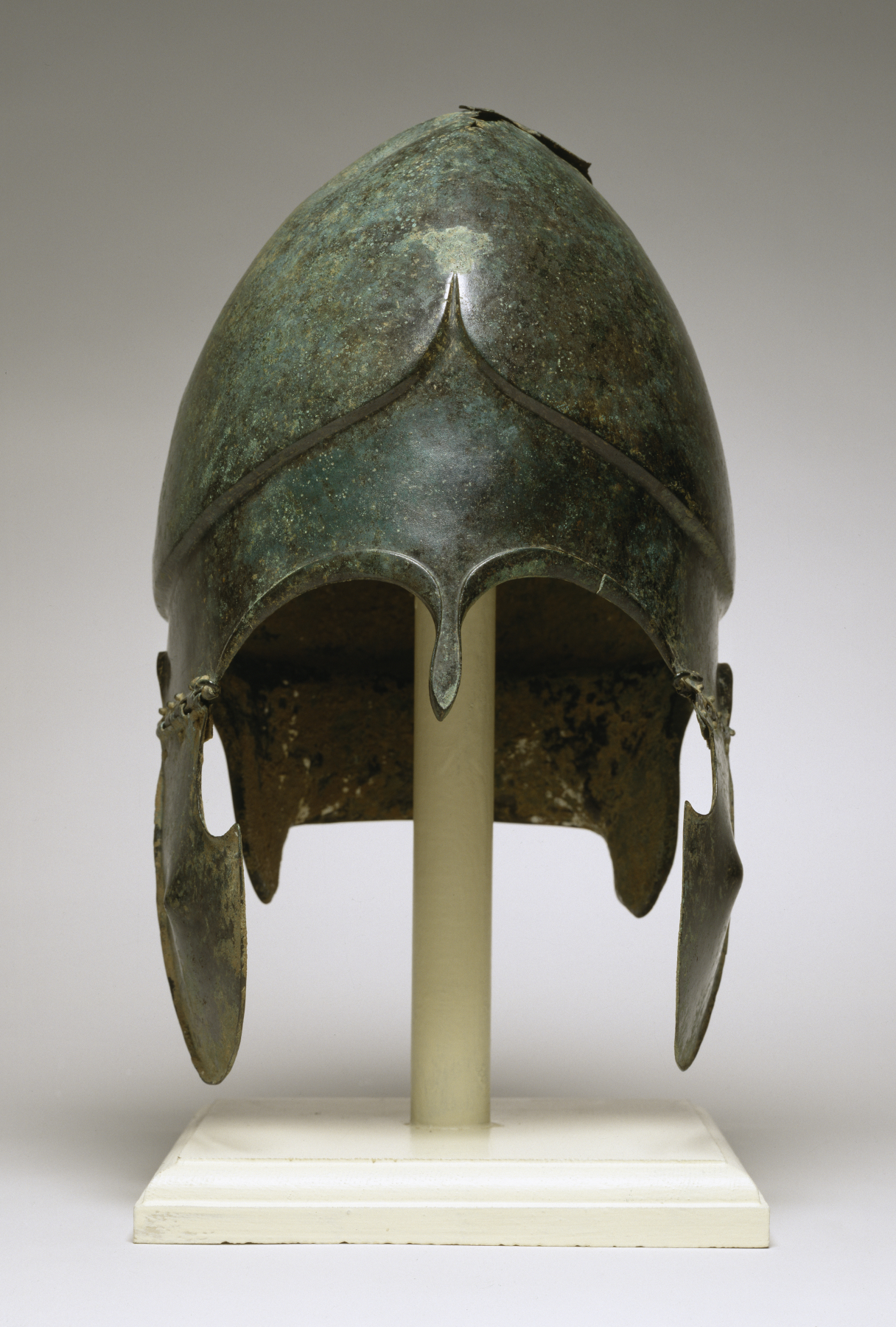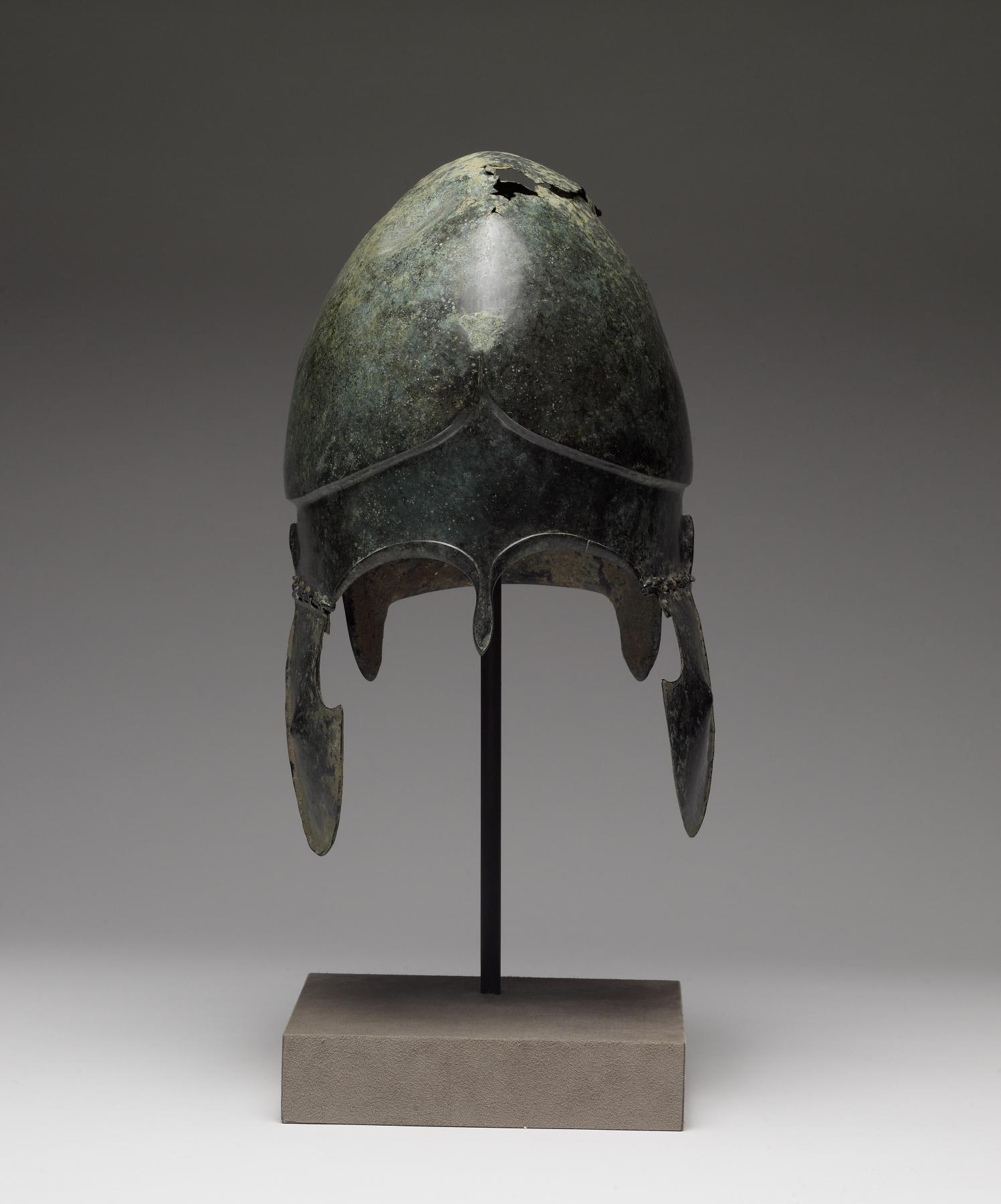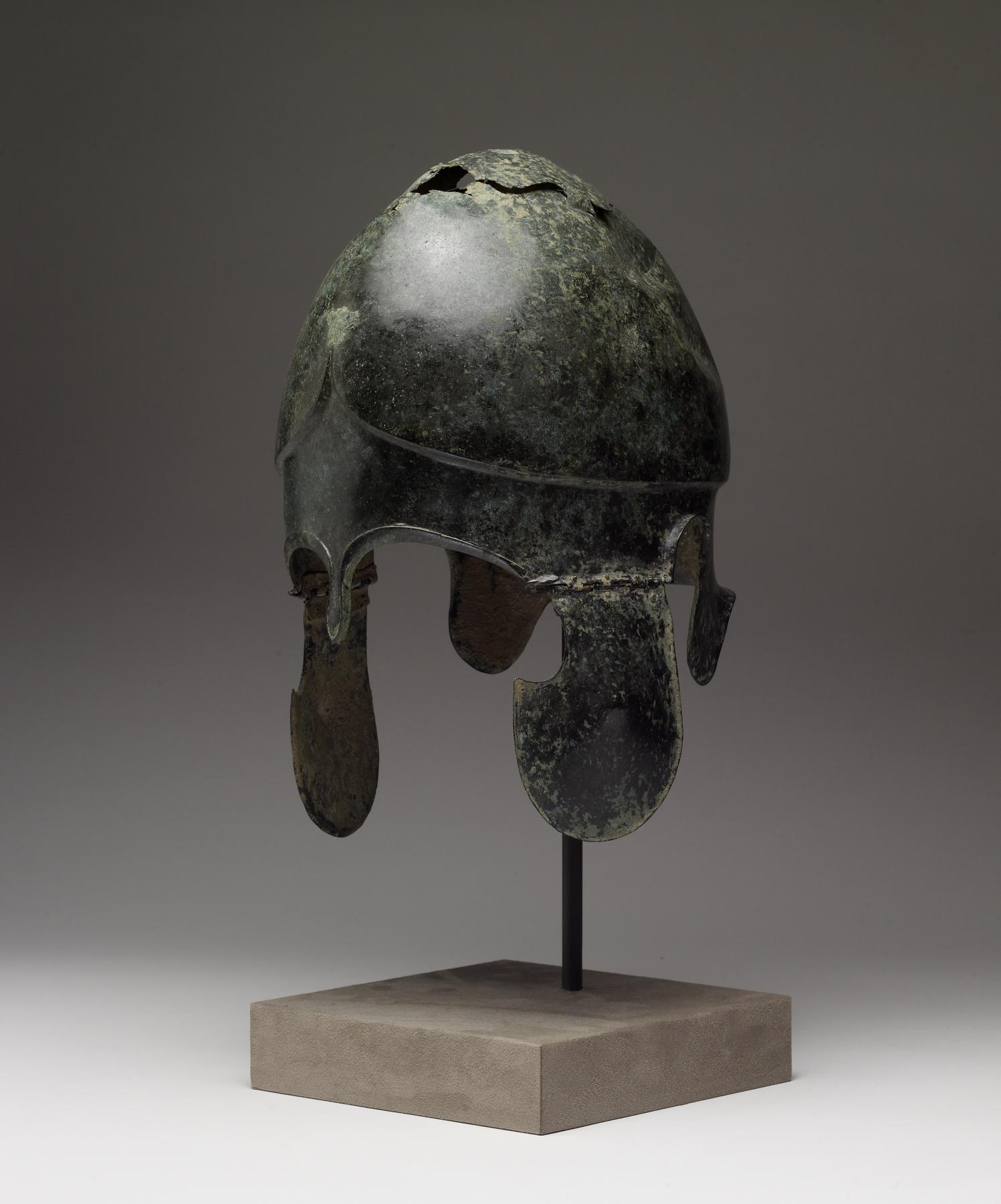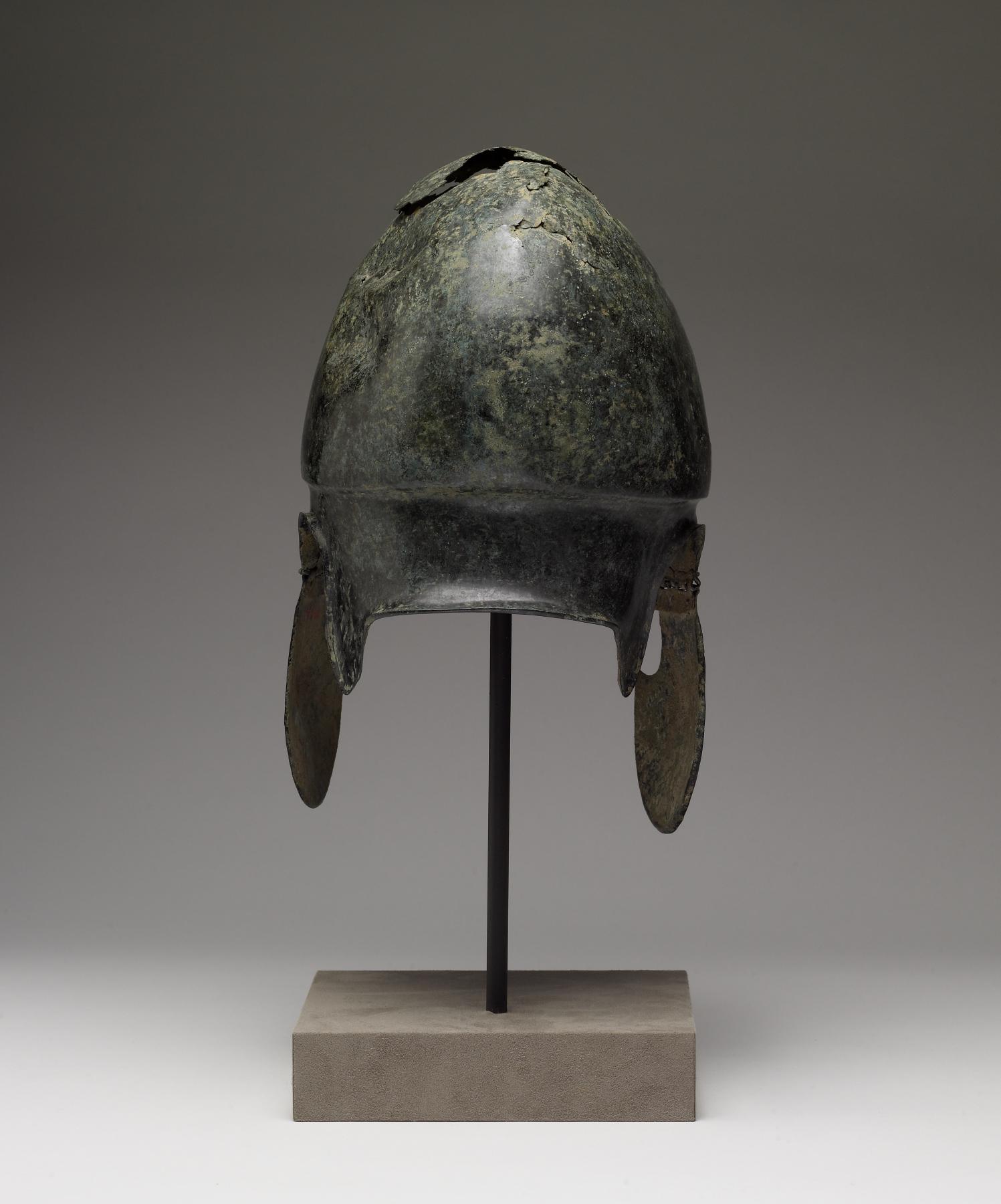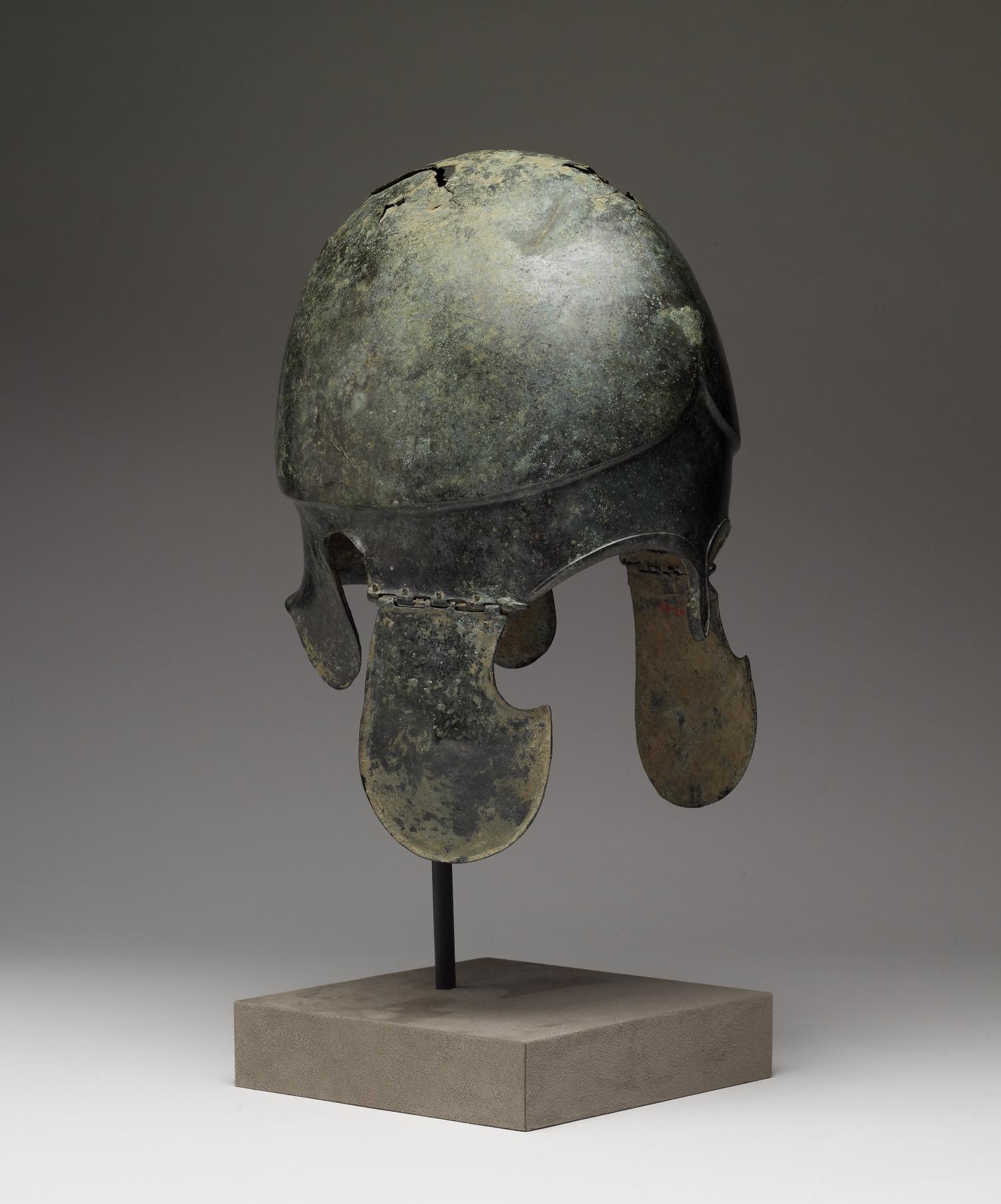Chalcidian-Type Helmet
The form of this helmet, known as Chalcidian, is distinguished by the curved cheekpieces, which are attached here by pins terminating in snake heads. For a Greek youth, the acquisition of a helmet was a long-awaited badge of manhood. Each helmet had to be custom-made and was typically lined with leather. A helmet was customarily hung on the wall of the owner's house during his lifetime and, especially in early times, would also be buried with him.
The advance in Greek technology that made possible the widespread production of hammered bronze helmets also led to the mass production of shields. As a result, on the battlefield individual duels were superseded by the phalanx, a form of combat in which warriors advanced together as an almost impenetrable wall of weaponry.
Provenance
Provenance (from the French provenir, 'to come from/forth') is the chronology of the ownership, custody, or location of a historical object. Learn more about provenance at the Walters.
Peter Gwynn of Ronald A. Lee Works of Art, Surrey, England [date and mode of acquisition unknown]; Walters Art Museum, 1966, by purchase.
Exhibitions
| 1998-2001 | Highlights from the Collection. The Walters Art Gallery, Baltimore. |
| 1995 | The Allure of Bronze. The Walters Art Gallery, Baltimore. |
Geographies
Greece (Place of Origin)
Measurements
11 7/8 x 7 5/16 x 9 1/4 in. (30.1 x 18.5 x 23.5 cm)
Credit Line
Museum purchase, 1966
Location in Museum
Accession Number
In libraries, galleries, museums, and archives, an accession number is a unique identifier assigned to each object in the collection.
In libraries, galleries, museums, and archives, an accession number is a unique identifier assigned to each object in the collection.
54.2468

